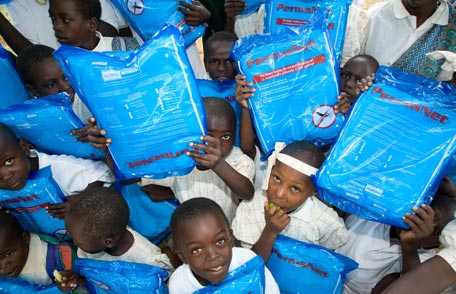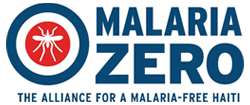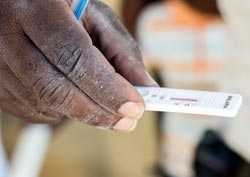World Malaria Day: April 25, 2017

Photo by David Snyder/CDCF
CDC and Partners on the Road to “End Malaria for Good”
This year’s theme for World Malaria Day is “End Malaria for Good,” reminding us of both the opportunity that exists and the continued commitment that is needed to break the cycle of malaria and eliminate it once and for all. CDC was at the forefront of the original push for malaria elimination, which resulted in eliminating local malaria transmission in the United States, across much of Europe and the Caribbean, and in parts of the Middle East. Current malaria control initiatives led by endemic countries working in partnership with the World Health Organization(WHO); the Roll Back Malaria Partnership; the Global Fund to Fight AIDS, Tuberculosis and Malaria; and the U.S. President’s Malaria Initiative (PMI) have contributed to important reductions in malaria incidence and deaths over the last 15 years.
“The challenges we face are sizeable but not insurmountable. Recent experience has shown that with robust funding, effective programs and country leadership, progress in combatting malaria can be sustained and accelerated. The potential returns are well worth the effort. With all partners united, we can defeat malaria and improve the health of millions of people around the world.” – Dr. Margaret Chan, Director-General of WHO
“CDC’s engagement with eliminating malaria now spans 75 years. The agency was founded on the idea of protecting people from this deadly disease. We have made great strides in recent years and remain steadfast in our commitment to reduce the needless death and illness from malaria, and to end the threat for good.” – Dr. Monica Parise, Director, Division of Parasitic Diseases and Malaria


An RDT is an alternate way of quickly establishing the diagnosis of malaria infection by detecting specific malaria antigens in a person’s blood. Photo by David Snyder/CDCF
From 2000 to 2015, donors have collectively supported procuring and distributing more than one billion insecticide-treated bed nets and billions of artemisinin-based combination treatments (ACTs) globally. During this time the estimated number of malaria deaths worldwide has declined from 839,000 to 429,000, and the proportion of child deaths fell by 35%. This accomplishment is estimated to have saved up to 6.8 million lives, mostly among children under the age of five.
The map of where malaria is still a risk has also shrunk. During this same time, seventeen countries that historically were malaria endemic have reported zero local malaria cases. Six of those countries have been certified as malaria free by WHO. WHO estimates that reaching the global goals for malaria control and elimination for 2030 would generate an additional US $2 trillion worldwide.
Despite this tremendous set of achievements, approximately 3.2 billion people still remain at risk for malaria, and over 200 million illnesses (and more than 400,000 deaths) are reported annually. Access to appropriate diagnostic testing and antimalarial drugs for children and pregnant women also remains poor in many parts of Africa, and concerns about insecticide and antimalarial drug resistance are even more pressing than ever. There is still more to be done to achieve global targets in WHO’s Global Technical Malaria Strategy 2016–2030.
What CDC Is Doing
Confronting Malaria in the United States
While local transmission of malaria was eliminated from the United States in the early 1950s, CDC remains vigilant to monitor and help clinicians diagnose and treat cases of imported malaria each year. On average 1,500 cases of imported malaria are reported by U.S. physicians each year, and on average 5 of those cases are fatal. Rapidly responding to these imported cases is critical to saving lives and to preventing reintroduction of malaria transmission in the United States. CDC also provides guidance for the prevention of malaria in international travelers to areas where malaria still poses a risk. Still, the best way to reduce the risk is to reduce or stop malaria transmission where it occurs.
Reducing the Global Burden and Risk of Malaria
In support of the collective goal to end malaria, CDC is committed to identifying and expanding the use of proven malaria control strategies worldwide, including the distribution of long-lasting insecticidal nets (LLINs), rapid diagnostics tests (RDTs), indoor residual spraying (IRD), artemisinin-based combination therapies (ACTs), and intermittent preventive treatment in pregnancy (IPTp) through PMI. By the end of 2015, PMI had procured and distributed more than 171 million LLINs, 243 million RDTs, 377 million ACT treatments, and 46 million IPTp treatments in 19 countries in sub-Saharan Africa, as well as countries in the Greater Mekong Region. Contributions by PMI and other donors have greatly increased access to quality malaria diagnosis and appropriate antimalarial drugs in sub-Saharan Africa. In 2016, WHO reported the number of malaria cases identified in public sector healthcare facilities that were diagnosed with a confirmed laboratory test result increased from 40% of suspected malaria cases in 2010 to 76% in 2015. A confirmed test result is an important step toward being able to transform malaria surveillance into a tool that will help local and national officials target their control and elimination efforts more effectively.
CDC also continues to invest in cutting-edge science in the fields of malaria surveillance, entomology and vector control, malaria diagnostics, and in studies to identify and address emerging resistance to insecticides and antimalarial drugs. CDC scientists have contributed to research on a diverse range of issues, including adapting a laboratory tool for detecting low levels of malaria infection in resource-limited settings, clinical trials on the effectiveness and safety of an artemisinin drug combination (dihydroartemisinin-piperaquine) to prevent onward transmission of malaria from infected humans to mosquitoes, and an evaluation of bed nets treated with a combination of insecticides to curb insecticide resistance. CDC staff have also been integral to evaluating promising malaria vaccines, including the RTS,S/AS01 and a newer sporozite vaccine (PfSPZ).
Helping to Eliminate Malaria Close to Home
CDC is also leading a consortium of malaria partners aiming to eliminate malaria transmission from Haiti and the Dominican Republic by 2020. Supported by an initial $29.9 million grant from the Bill & Melinda Gates Foundation, the Malaria Zero partners are working collectively with governments and organizations in Haiti and the Dominican Republic to implement an evidence-based approach to create a malaria-free zone across the Caribbean. These efforts will help identify promising practices for elimination of malaria from other regions and bring us one step closer to ending malaria for good.
More Information
- World Malaria Day
- CDC Malaria Web Site
- U.S. President’s Malaria Initiative
- Malaria Zero
- World Malaria Report 2016
- Roll Back Malaria
- For Travelers: Malaria Information and Prophylaxis by Country
- Our Global Voices Blog: The Road Ahead to Malaria Eradication
- Global Health Story: CDC Scientists Working to Protect U.S. Servicemen and Women from Malaria
- Our Global Voices Blog: The “Ride” to Eliminating Malaria in Haiti
- Page last reviewed: April 25, 2017
- Page last updated: April 25, 2017
- Content source:
- Center for Global Health, Division of Parasitic Disease and Malaria
- Page maintained by: Office of the Associate Director for Communication, Digital Media Branch, Division of Public Affairs




 ShareCompartir
ShareCompartir